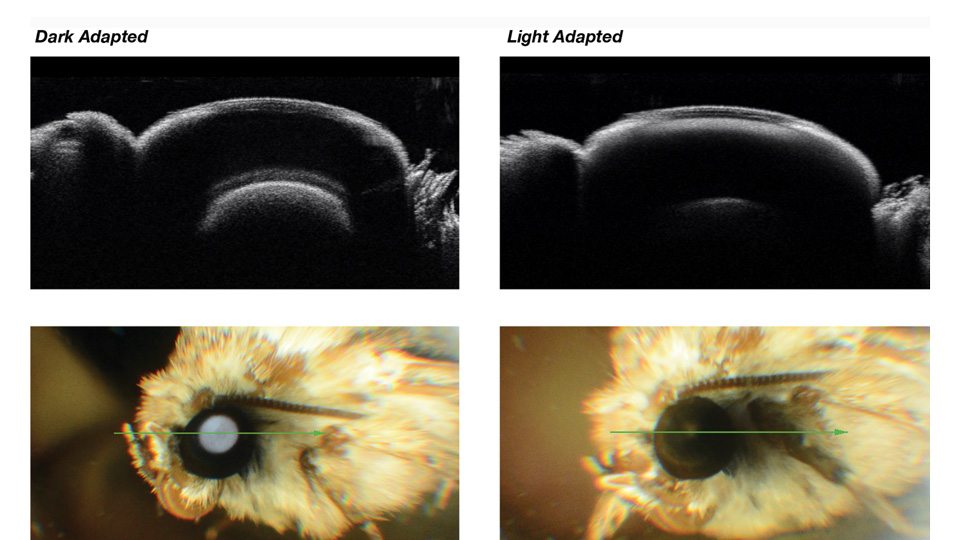- OT
- Life in practice
- Practitioner stories
- “That is how new discoveries are made – when you can look at something from a different angle”
Secret life
“That is how new discoveries are made – when you can look at something from a different angle”
Optometrist Simon Berry talks about what he learned through taking optical coherence tomography scans of moths
3 min read


Simon Berry
26 October 2022
I like doing unusual things – scanning things that have never been scanned before. I have taken OCT scans of butterfly eyes and spider eyes. I scanned a crow fovea that looks very different to a human fovea. Birds and reptiles have no blood vessels in their retina so they have this structure called a pecten that comes out into the vitreous. I managed to scan a gecko pecten.

Correlation of OCT scans to moth's eye glow for dark and light adapted eyes.
Nobody had ever documented the process because, by definition, you would have to kill a moth and then have a look at it under a microscope. With OCT, you can see that process as it happens in a live moth.
I wanted to make sure that I wasn’t harming any animals. I caught moths using a Heath Robinson moth trap in my front garden. It is a specialist UV lamp that attracts moths through a small funnel. I would collect them in the morning and transport them to the practice and hold them in front of the OCT machine.
I put my Topcon 2000 OCT machine into manual mode and changed the interpolation to the highest level. That gave me the best resolution. Once the moths were light adapted, that is there sleeping time. Many of them stayed still and did not move at all.
A skipper butterfly has a superposition eye as well. I captured one and used it as a control, subjecting it to the same light conditions. The butterfly didn’t light adapt but the moths did.
I quite like the fact that I am an optician, but my first published research paper is in an entomology journal
Light adaption is already known about, but this shows a different perspective on the process. That is how new discoveries are made – when you can look at something from a different angle. By looking at the light adaption process we could have a better understanding of their behaviour.
When you are doing something new, you can’t go to a book when you come across a problem. You have to think your way around it. I think that is quite refreshing and keeps your brain ticking over.
The research was published in Environmental Entomology in June. The thing that I am chuffed about is that I have been researching eyes for around 20 years and this is my first single-author paper in a peer-reviewed journal. Generally, in this world you are only allowed to be known for one thing – whether you are an actor or a fisherman. I quite like the fact that I am an optician, but my first published research paper is in an entomology journal.
Main image: A live OCT image of a moth’s eye presented beside a diagram of the corresponding anatomy. Figure illustrator – Juliet Percival.
• As told to Selina Powell.

Comments (0)
You must be logged in to join the discussion. Log in